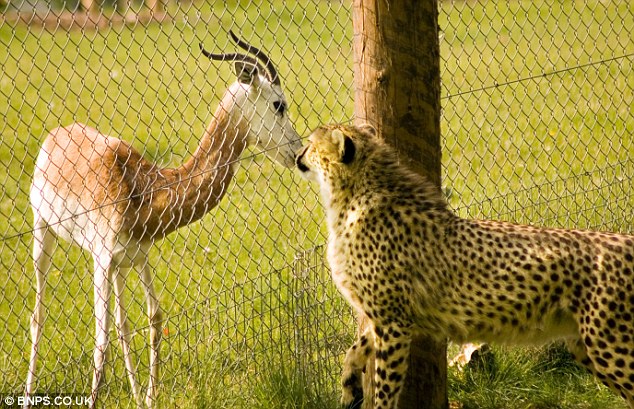How Cheetahs Hunt For Food
This is an obvious truth that herbivores envy carnivores like cheetahs that enjoy their food without being eaten unlike the herbivores. While most cats are nocturnal predators, the cheetah is primarily diurnal, hunting in early morning and late afternoon. Since it depends on sight rather than smell, it likes to scan the wild from a tree limb or the top of a termite mound. Other big cats chase only a few hundred meters: the cheetah chases 3.4 miles (5500 meters) at an average speed of 45 miles per hour (72 kilometers per hour). The energy cheetahs spend on going after their prey make one wonder if they do gain the energy after the feed. However, cheetahs have a very refined approach to hunting probably to avoid being unsuccessful.
Spotting Prey
A cheetah’s night vision is poor compared to others in the big cat kingdom; it is the only big cat that hunts during the day. This poses some unique challenges for the cheetah, as it does not have the cover of darkness to enable it to spring a surprise attack on its prey. A cheetah spends the mornings and early evenings looking for prey, when there is light but low sun. To hunt under the heat of a high sun would be extremely challenging for the cheetah, given the energy it needs to expend to catch its meal.
Approaching Prey
Cheetahs typically hunt zebra, wildebeest and gazelle. These are all herd animals and all take turns to look out for danger. So the stealthy cheetah assassin must use its wits as well as its lightning speed to have the best chance of getting a kill. A cheetah will always approach its prey from a downwind position so its scent does not give them away. It uses the natural undulations and peaks of its habitat, such as hills and termite mounds, to cover as it approaches. A cheetah has to stay out of sight until it is time to pounce.
Stalking Prey
Once a cheetah spots a prey, it stalks the prey. Tall grass is essential here. Fortunately for the cheetah, the places where its favourite prey gathers to drink are typically surrounded by tall grass. Using the tall grass for cover and its spots as camouflage, it silently approaches its prey, treading softly and slowly to avoid detection. Although the cheetah is the fastest land animal in the world, it is not capable of prolonged chases, so it needs to position itself as close to its prey as possible before it decides to make an ambush.
Catching Prey
Once close enough, the cheetah uses its electrifying speed to launch a surprise ambush. Once it is in sight, its prey will bolt, so cheetah has to chase down any lagers before it is exhausted. If cheetah times its hunt well, its raw speed means it will quickly catch something. Cheetahs can hit speeds of 71 mph and use their long tails for balance, so once the hunt is on, it has a 1 in 10 chance of getting a kill.
Keeping Prey
Once cheetah subdues its prey, it may begin eating the prey before the prey is dead. This is to reduce the chances of a scavenger, such as a hyena, or a larger big cat like a lion or leopard coming along and robbing it of the prize it worked so hard to win.
